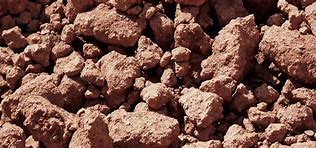Jul . 26, 2024 15:01 Back to list
Innovative Materials for Effective Sound Absorption and Waterproofing in Modern Applications
Waterproof Sound Absorbing Materials An Efficient Solution for Noise Control
In recent years, urbanization and industrialization have led to a significant increase in noise pollution, affecting both our health and quality of life. As cities grow denser, the quest for materials that can effectively absorb sound while also providing waterproof capabilities has gained momentum. Waterproof sound absorbing materials are gaining prominence as versatile solutions that address these challenges, making them invaluable in various applications, from construction to automotive industries.
The Need for Sound Absorption
Noise pollution is not merely an irritant; it can have serious health implications, including stress, hearing loss, and sleep disturbances. Many environments, such as offices, concert halls, and residential areas, require effective sound management to ensure comfort and productivity. In addition to this, in outdoor settings, sound absorption is crucial to mitigating noise from traffic, machinery, and other urban activities.
What are Waterproof Sound Absorbing Materials?
Waterproof sound absorbing materials are engineered products designed to block or reduce sound transmission while also preventing water penetration. These materials are often made from composites that combine sound-absorbing elements like porous foams or fibers with waterproof coatings or membranes. The result is a dual-function product that can be effectively used in various environments, including both indoor and outdoor settings.
Applications of Waterproof Sound Absorbing Materials
waterproof sound absorbing material

1. Construction In the realm of architecture and construction, waterproof sound absorbing materials are essential, especially in regions susceptible to moisture or extreme weather conditions. They can be employed in walls, ceilings, and floors to minimize noise both from external sources and within the building itself. 2. Automotive The automotive industry also benefits from these materials, where reducing cabin noise while ensuring durability against moisture can enhance passenger comfort. Sound absorbing insulation materials with waterproof properties are essential in vehicles to create a quieter ride.
3. Auditoriums and Theaters In contexts where acoustics are paramount, such as concert halls and theaters, waterproof sound absorbing materials can be crucial. They not only help in controlling sound reflections and reverberations but also manage humidity levels, contributing to the overall acoustics of the space.
4. Public Spaces Parks, public plazas, and recreational areas often face acoustic challenges due to the proximity of urban development. Utilizing waterproof sound absorbing panels in these areas can help create more peaceful environments, allowing people to enjoy nature without the disturbances from the nearby traffic or activities.
Benefits Beyond Sound Absorption
Beyond their dual function of sound absorption and waterproofing, these materials offer additional advantages. Many of them are lightweight and easy to install, making them a cost-effective choice for builders and architects. Additionally, several modern waterproof sound absorbing materials are made from sustainable materials, making them a more environmentally friendly option in an era that emphasizes green building practices.
Conclusion
Waterproof sound absorbing materials represent a crucial innovation in the ongoing battle against noise pollution, particularly in urban environments. As the need for quieter, more comfortable spaces grows, these versatile materials promise to play an integral role across various industries. By integrating sound absorption with waterproof capabilities, we can create environments that foster health, productivity, and overall well-being, ensuring that we live and work in spaces that not only sound good but also withstand the elements. As research continues and technologies advance, the future of sound management will likely depend significantly on these innovative materials.
-
Eco-Friendly Granule Covering Agent | Dust & Caking Control
NewsAug.06,2025
-
Fe-C Composite Pellets for BOF: High-Efficiency & Cost-Saving
NewsAug.05,2025
-
Premium Tundish Covering Agents Exporters | High Purity
NewsAug.04,2025
-
Fe-C Composite Pellets for BOF | Efficient & Economical
NewsAug.03,2025
-
Top Tundish Covering Agent Exporters | Premium Quality Solutions
NewsAug.02,2025
-
First Bauxite Exporters | AI-Optimized Supply
NewsAug.01,2025
